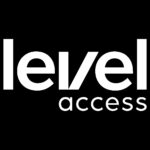- Categories (3)
- Guides - Platform
- Guides - Reviews
- Technical
EAA Compliance: Your Ultimate Guide to the European Accessibility Act
If you build or manage websites in Europe, accessibility is no longer just a best practice, it’s a legal requirement. The European Accessibility Act (EAA) mandates that digital services, including websites and mobile apps, meet accessibility standards to ensure equal access for all users, including those with disabilities.
These requirements are closely aligned with the internationally recognized Web Content Accessibility Guidelines (WCAG), and failure to comply could result in penalties, legal challenges, and damage to your brand’s reputation.
In this blog, we’ll break down what the EAA means for your digital platforms, how to meet compliance standards, and why investing in accessibility benefits everyone, not just your bottom line.
- What is the European Accessibility Act (EAA)?
- The Critical Connection: EAA Compliance and Web Accessibility
- Your Roadmap to EAA Compliance: A Step-by-Step Guide
- The Best Accessibility Service Provider for EAA Compliance - Level Access
- Beyond the Law: The Business Case for EAA Compliance
- EAA Compliance in Practice: Real-World Scenarios
- Frequently Asked Questions
What is the European Accessibility Act (EAA)?
The European Accessibility Act (EAA) is a directive introduced by the European Union to improve the accessibility of products and services across the EU. Its primary aim is to ensure that people with disabilities can fully participate in society, particularly in our increasingly digital world.

Understanding the Purpose and Scope of the EAA
At its core, the EAA is about removing barriers. It’s designed to create a more inclusive environment by standardising accessibility requirements across EU member states. The Act covers a wide range of digital and physical products and services, including:
-
Websites and mobile apps
-
eCommerce platforms
-
Banking services and ATMs
-
eBooks and e-readers
-
Ticketing and transport systems
-
Telecommunication services
For web professionals, the most relevant part of the EAA is its alignment with the Web Content Accessibility Guidelines (WCAG). Specifically, digital content and services must conform to WCAG 2.1 Level AA, ensuring usability for people with visual, auditory, cognitive, and motor impairments.
Who Needs to Comply?
The EAA doesn’t only apply to organizations based in the EU. If your business offers products or services to consumers within the EU, you are expected to comply, even if your headquarters are elsewhere.
This means that non-EU companies with digital platforms accessible to EU users are also held to these standards, and ignoring the EAA can result in your business being blocked from the EU market, fined, or even sued by affected users or advocacy groups.
The Fast-Approaching June 2025 Deadline
The deadline for full compliance is 28 June 2025.
Failure to meet EAA requirements could lead to:
-
Fines and legal action at a national level as enforcement is handled by individual EU member states.
-
Loss of market access, as inaccessible services may be banned or restricted.
-
Reputational damage, particularly if consumers or advocacy groups call out your business publicly.
Preparing now is about more than just avoiding penalties — it’s about creating a better, more inclusive experience for all users and opening your digital doors to a wider audience.
The Critical Connection: EAA Compliance and Web Accessibility
The European Accessibility Act (EAA) isn’t just another regulatory checkbox. It’s a pivotal moment in the movement toward a more inclusive digital world.

Why the EAA is a Game-Changer for Digital Accessibility
While web accessibility has long been encouraged, the EAA elevates it from best practice to legal obligation across the European Union. For the first time, it creates a harmonized framework that demands accessibility across both public and private digital services.
The EAA ensures:
-
Equal access to digital products and services for over 100 million people in the EU living with a disability.
-
A level playing field for businesses through consistent accessibility requirements.
-
More innovation and usability across the board by making accessibility part of the design process, not an afterthought.
Ultimately, the EAA reframes accessibility as a standard feature, not a bonus. This not only benefits users with disabilities but also the broader population, including older adults, non-native speakers, and those using mobile devices.
Understanding the POUR Principles: The Foundation of Accessible Design
The POUR principles — Perceivable, Operable, Understandable, and Robust — are the building blocks of accessible digital experiences. They guide the Web Content Accessibility Guidelines (WCAG) and serve as a clear framework for creating content that works for all users.
Perceivable
Information and user interface components must be presented in ways that users can perceive. This means:
-
Adding text alternatives for images (alt text)
-
Creating captions and transcripts for audio and video content
-
Ensuring the proper use of color and contrast for readability
Operable
User interface components and navigation must be usable for everyone, including those who rely on keyboards, screen readers, or other assistive technologies. Key practices include:
-
Providing keyboard navigation support
-
Avoiding content that causes seizures (e.g., flashing)
-
Implementing clear and consistent navigation
Understandable
Information and operation of the interface must be easy to understand. This involves:
-
Using clear instructions and language
-
Providing predictable interactions
-
Offering helpful error messages and suggestions
Robust
Lastly, content must be robust enough to work across different devices, browsers, and assistive technologies. That means:
-
Implementing clean, semantic HTML
-
Ensuring compatibility with screen readers and voice input
-
Following current web standards

WCAG Explained: The “How-To” for EAA Web Compliance
To meet the digital accessibility standards under the EAA, your site must conform to the Web Content Accessibility Guidelines (WCAG) 2.1, Level AA. These internationally recognized guidelines offer a detailed roadmap for making digital content accessible.
WCAG is organized around the POUR principles and includes specific, testable success criteria.
Some key WCAG 2.1 Level AA requirements include:
-
Text contrast ratio of at least 4.5:1
-
Keyboard operability of all interactive elements
-
Responsive design and text resizing support
-
Descriptive headings and link text
-
Error identification and correction suggestions
Meeting WCAG not only helps you comply with the EAA, but also improves the overall usability, SEO performance, and customer satisfaction of your digital platforms.
Your Roadmap to EAA Compliance: A Step-by-Step Guide
Complying with the European Accessibility Act (EAA) may feel overwhelming at first, but it’s entirely achievable with a structured approach.

Step 1: Conduct a Thorough Accessibility Audit
Before making any changes, you need to understand where your digital platform currently stands. A comprehensive accessibility audit helps identify problem areas and set a baseline for improvement.
There are two types of audits you should use together for the most accurate results:
-
Automated accessibility tools: These tools can quickly flag common issues like missing alt text, poor contrast, and incorrect heading structure. Automated tools such as AccessibilityChecker.org use AI technology to take a lot of the guesswork out of where your site stands and clearly outlines what issues need to be addressed on your site.
-
Manual testing. Human interaction is an important part of web accessibility testing. A real person can assess things automated tools miss, such as logical tab order, screen reader compatibility, and whether text is truly user-friendly. A manual audit allows you to go deeper and gives you in-depth feedback from a human point of view.
Don’t forget to test mobile and desktop versions, and check both public-facing and internal systems, such as login areas, forms, and downloadable documents.
Step 2: Develop a Remediation Plan and Prioritize Fixes
Once you’ve identified the accessibility issues that are present on your site, it’s time to create a clear remediation plan. This should outline:
-
What needs to be fixed
-
Who is responsible
-
When it should be done
Start by prioritizing the most critical issues. This would be anything that blocks access to key content or functionality. It’s also recommended that you address any Level A and Level AA WCAG violations first.
Consider grouping fixes by type (e.g., color contrast, keyboard navigation, image alt text) or by page templates to make the process more efficient.
Lastly, be sure to assign clear roles to developers, designers, content creators, and QA testers.
Step 3: Implement Accessibility Best Practices
Remediation isn’t just about fixing existing issues, it’s also about preventing new ones. That means embedding accessibility best practices into every stage of your digital workflow.
Here are some key tips:
-
Use semantic HTML elements
-
Write descriptive alt text for all meaningful images
-
Ensure all interactive elements are usable via keyboard
-
Maintain a clear, consistent layout and heading hierarchy
-
Provide captions for videos and transcripts for audio content
-
Test form fields for proper labeling and error handling
It’s also a great time to train your team on accessibility principles so everyone involved in content creation, development, or design is aligned moving forward.
Step 4: Ongoing Monitoring and Maintenance
Accessibility isn’t a “set it and forget it” task. Websites evolve and so do regulations, user needs, and technologies. That’s why ongoing monitoring and maintenance is essential.
Best practices for staying compliant over time include:
-
Regular accessibility audits (quarterly or bi-annually)
-
Integrating accessibility checks into every release cycle
-
Monitoring user feedback and accessibility complaints
-
Keeping up with updates to WCAG and local laws
-
Including accessibility in QA/testing processes
You should also consider adding an Accessibility Statement to your site to show your commitment and provide users with a way to report issues.
- WCAG
- ADA
- AODA
- Section 508
- Comprehensive accessibility solutions with automated testing and manual audits
- Expert-led guidance and legal support
- Role-specific training for accessibility across teams
- Integrates seamlessly with Jira and Azure DevOps
- Might not be suitable for all SMBs




Beyond the Law: The Business Case for EAA Compliance
While complying with the European Accessibility Act (EAA) is a legal requirement, the benefits of web accessibility go far beyond avoiding fines. In fact, embracing accessibility can give your business a competitive edge in multiple areas.

Expanding Your Market Reach to Millions of Potential Customers
According to the World Health Organization, over 1 billion people worldwide live with some form of disability and over 100 million of them reside in the EU. That’s a massive audience you could be missing if your website isn’t accessible.
Accessible websites open the door to:
-
New customers who may have been excluded from inaccessible platforms.
-
Older adults, whose needs often overlap with those of users with disabilities.
-
Users with situational limitations, such as people using a phone in bright sunlight or a parent holding a baby with one hand.
By meeting accessibility standards, you’re not just ticking a compliance box, you’re welcoming a more diverse, loyal, and appreciative audience.
Enhancing User Experience for Everyone
Accessibility improvements tend to enhance usability for all users, not just those with disabilities. Features like keyboard navigation, clear calls to action, logical content structure, and well-contrasted text make websites easier and more enjoyable for everyone.
For example:
-
Captions on videos help both deaf users and people watching in a noisy environment.
-
Easy-to-navigate interfaces benefit people with cognitive disabilities and users with limited time.
-
Responsive, mobile-friendly design improves accessibility and meets modern UX expectations.
A website that works for all users is one that reduces frustration, improves engagement, and increases conversions.
Boosting Your Brand’s Reputation and SEO
Committing to accessibility demonstrates that your brand is inclusive, ethical, and forward-thinking, values that resonate strongly with today’s consumers. It sends a message that you care about all your customers, not just the majority.
Additionally, many accessibility practices align closely with SEO best practices. For instance:
-
Using semantic HTML improves search engine crawling.
-
Alt text helps both screen readers and image indexing.
-
Clear headings and well-structured content enhance readability and keyword relevance.
-
Fast-loading, mobile-optimized sites rank better and are more accessible.
In short, what’s good for accessibility is often good for visibility, both in search results and in the eyes of your audience.
EAA Compliance in Practice: Real-World Scenarios

Understanding the European Accessibility Act (EAA) is one thing, but seeing how it applies in the real world makes it easier to take action. Here are three practical examples of industries where EAA compliance is transforming digital experiences for the better.
eCommerce: Ensuring an Accessible Shopping Experience
Online retailers must ensure that all users can browse, search, select, and purchase products without barriers. Under the EAA, inaccessible eCommerce platforms could face serious legal and reputational consequences.
Key accessibility considerations in eCommerce include:
-
Keyboard-navigable menus and product filters.
-
Descriptive alt text for product images.
-
Clear and consistent heading structures to aid screen reader navigation.
-
Accessible checkout forms with labeled fields and error suggestions.
-
Voice control and screen reader compatibility.
An accessible shopping experience benefits everyone, including customers with visual impairments and busy parents using voice search on mobile, which leads to higher conversion rates and lower cart abandonment.
Banking Services: Accessible Digital Banking for All
Digital banking is a daily necessity, and the EAA mandates that banks ensure equal access to online banking tools, mobile apps, and self-service kiosks. Inaccessible banking services can prevent users with disabilities from managing their finances independently, which is a critical equity issue.
Accessibility features in banking might include:
-
Screen-reader-compatible interfaces for account management.
-
Captioned instructional videos and audio content.
-
Speech recognition and keyboard alternatives for authentication.
-
High-contrast modes and scalable fonts for users with low vision.
-
Accessible PDFs for account statements and forms.
Leading banks are already rethinking their digital infrastructure to prioritize accessibility, not just for compliance, but to build trust with all customers.
Publishing: The Shift to Accessible e-books and Digital Content
EAA regulations also cover digital publications, meaning eBooks, online magazines, learning platforms, and other digital content must be made accessible. For publishers, this means integrating accessibility from the ground up.
Key compliance steps in publishing include:
-
Using accessible ePub formats that support screen readers and text resizing.
-
Providing structured headings, alt text, and metadata.
-
Offering text-to-speech capabilities and compatibility with assistive technologies.
-
Avoiding image-only documents or scanned text without OCR (optical character recognition).
For educational publishers and content creators, accessibility isn’t just about compliance, it’s about expanding access to knowledge and creating inclusive learning experiences.
EAA Compliance Can Be a friend
Is meeting the EAA digital accessibility standards really worth all the effort? In short, yes. Digital inaccessibility can actually end up costing you more than digital accessibility.
Thanks to the many automated and manual solutions that are available today, achieving digital accessibility compliance is an affordable and attainable goal for any sized business.
If you would like to find out where your website stands, scan your URL for free here.
Accessibility Checker
Scan your website for accessibility related issues for free
The European Accessibility Act (EAA) is an EU directive that sets out accessibility requirements for a wide range of products and services, including websites, mobile apps, e-commerce platforms, banking services, and digital publications. Its goal is to ensure that people with disabilities can access and use digital and physical services across the EU. The EAA aligns with the Web Content Accessibility Guidelines (WCAG) and requires full compliance by 28 June 2025.
The GDPR (General Data Protection Regulation) focuses on protecting personal data and privacy, while the EAA (European Accessibility Act) ensures equal access to products and services for people with disabilities. GDPR is about how data is collected, stored, and used, whereas EAA is about making digital and physical services accessible to everyone. Both are EU regulations but address different aspects of digital responsibility.
The EAA applies to businesses and service providers operating in the EU, including non-EU companies that offer products or services to EU consumers. This includes sectors like e-commerce, banking, transport, publishing, and digital communications. If your website, app, or digital service is accessible to users in the EU, you are expected to comply with the EAA.
EAA accommodations refer to the steps taken by businesses, sectors, and institutions to ensure people have equal opportunities and accessibility, regardless of their ability. One example is making it possible for an employee or student with a disability to work and study without any barriers.
1 comments
I’m afraid this article has multiple issues. The most urgent issue is that there two European accessibility Directives, not one: there’s the Web Accessibility Directive (WAD), which was published in October 2016, numbered 2016/2102 and available https://data.europa.eu/eli/dir/2016/2102/oj . The other one is the European Accessibility Act (EAA), which was published in April 2019, numbered 2019/882 and available at https://data.europa.eu/eli/dir/2019/882/oj .
The scope of WAD are websites and mobile applications of public sector bodies (PSBs)
The scope of EAA is a wide array of products and services, which are mentioned in the article. Feel free to contact me in case you have questions about this comment.



